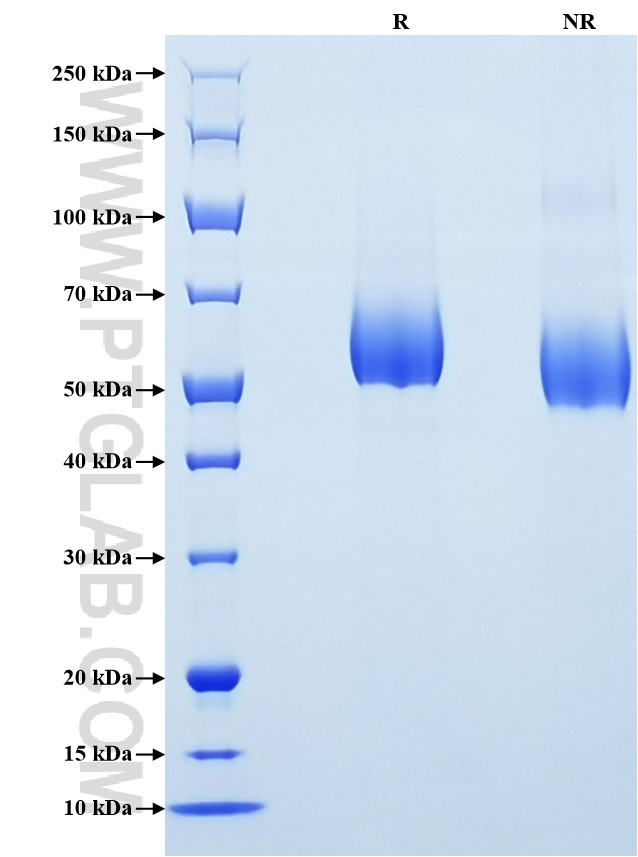Recombinant Human FGFR3(IIIc) protein (His Tag)
种属
Human
纯度
>90 %, SDS-PAGE
标签
His Tag
生物活性
未测试
验证数据展示
产品信息
| 纯度 | >90 %, SDS-PAGE |
| 内毒素 | <0.1 EU/μg protein, LAL method |
| 生物活性 |
Not tested |
| 来源 | HEK293-derived Human FGFR3(IIIc) protein Glu23-Gly375 (Accession# P22607-1) with a His tag at the C-terminus. |
| 基因ID | 2261 |
| 蛋白编号 | P22607-1 |
| 预测分子量 | 39.2 kDa |
| SDS-PAGE | 50-70 kDa, reducing (R) conditions |
| 组分 | Lyophilized from 0.22 μm filtered solution in PBS, pH 7.4. Normally 5% trehalose and 5% mannitol are added as protectants before lyophilization. |
| 复溶 | Briefly centrifuge the tube before opening. Reconstitute at 0.1-0.5 mg/mL in sterile water. |
| 储存条件 |
It is recommended that the protein be aliquoted for optimal storage. Avoid repeated freeze-thaw cycles.
|
| 运输条件 | The product is shipped at ambient temperature. Upon receipt, store it immediately at the recommended temperature. |
背景信息
Fibroblast growth factors (FGFs) are polypeptide growth factors involved in a variety of activities including mitogenesis, angiogenesis, and wound healing. The human FGF receptor family, a subfamily of receptor tyrosine kinases (RTKs), comprises of four family members-FGFR1, FGFR2, FGFR3, and FGFR4. Each receptor contains an extracellular domain with either two or three immunoglobulin-like domains, a transmembrane domain, and a cytoplasmic tyrosine kinase domain. FGFR3 plays a key role in different important physiological cellular processes such as regulation of cell growth, proliferation, angiogenesis, among the others. Moreover, FGFR3 binds acidic and basic fibroblast GH and plays a role in bone development and maintenance. Mutations in the FGFR3 gene lead to craniosynostosis and multiple types of skeletal dysplasia.
参考文献:
1. K Keegan. et al. (1991). Proc Natl Acad Sci U S A. 88(4):1095-9. 2. Kai Hung Tiong. et al. (2013). Apoptosis.18(12):1447-1468. 3. C Deng. et al. (1996). Cell.84(6):911-921. 4. Claudia Maria Ascione. et al. (2023). Cancer Treat Rev.115:102530.
